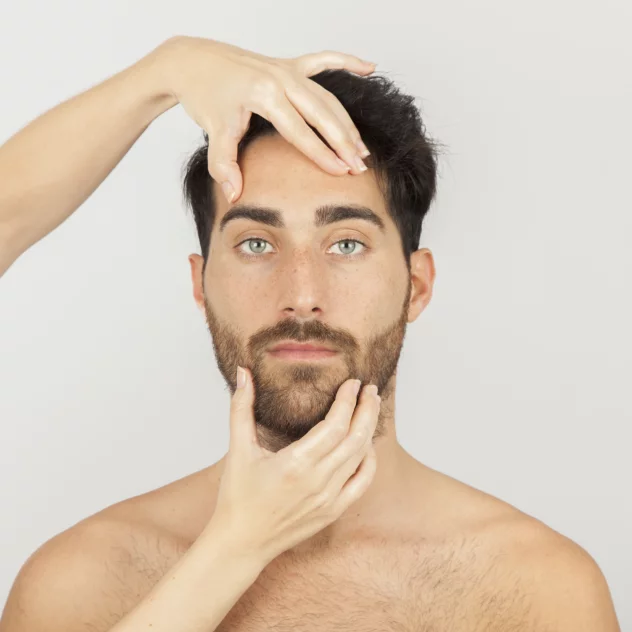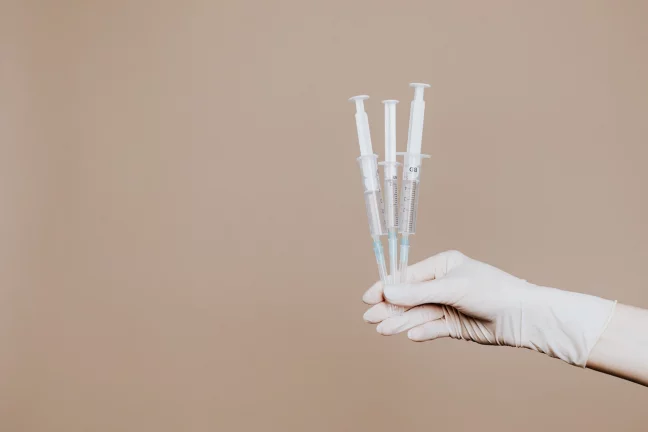-
.webp)
- Author Faramarz Rafie M.D. DBA
- Jun 7th, 2023
Volume Vs MASS: Full Guide by Faramarz Rafie M.D.
99999999.webp)
Dermal Fillers
Dermal fillers have revolutionized the field of aesthetic medicine enhancements by offering effective treatments for both replacing lost facial volume and enhancing facial features with increased volume. These versatile fillers are expertly administered through precise injections, targeting specific areas of the face. They serve to replenish depleted volume, restoring a youthful fullness to areas affected by aging or fat loss. Additionally, dermal fillers provide the opportunity to accentuate and augment facial features such as the lips, cheeks, or chin, by strategically adding volume and creating a more balanced and harmonious appearance. With their ability to address volume loss and provide tailored enhancements, dermal fillers have become invaluable tools for beauty seekers in their quest to achieve natural-looking results and rejuvenated facial aesthetics.
Dermal fillers are commonly used to restore lost volume in areas of the face. As we age, our skin tends to lose elasticity and fullness, resulting in wrinkles, fine lines, and a sunken appearance. Dermal fillers can be injected into specific areas, such as the cheeks, lips, nasolabial folds, or under the eyes, to restore volume and plump up the treated area. By adding volume, dermal fillers can help smooth out wrinkles, improve facial contours, and create a more youthful appearance. The filler material fills the space beneath the skin, providing immediate results that can last for several months to over a year, depending on the type of filler used.
“With their ability to address volume loss and provide tailored enhancements, dermal fillers have become invaluable tools for beauty seekers in their quest to achieve natural-looking results and rejuvenated facial aesthetics.”
Facial volume loss occurs naturally as a part of the aging or unnaturally during the premature aging process. Several factors contribute to this phenomenon:
Collagen and Elastin loss: Collagen and elastin are proper connective tissue fibers which are humectants in nature. These protein fibers are responsible for skin Tones and somehow for elasticity. As we age, the natural production of collagen and elastin, which are important skin fibers responsible for elasticity and firmness, decreases. This decline in collagen and elastin production can lead to a loss of skin elasticity and firmness, contributing to a decrease in facial volume. In addition to the natural aging process, certain external factors can further accelerate the loss of skin fibers and impact facial volume.
These factors may include:
UV Light Exposure: Prolonged and unprotected exposure to ultraviolet (UV) radiation from the sun can damage collagen and elastin fibers in the skin. This can result in premature aging, including a decrease in facial volume.
Dehydration: Inadequate hydration can negatively affect the health and appearance of the skin. When the skin lacks proper hydration, it may appear dull, saggy, and less plump, which can contribute to a loss of facial volume.
Improper Skincare: A lack of proper skincare practices, such as not moisturizing regularly or not using sunscreen, can contribute to the breakdown of collagen and elastin fibers in the skin. This can accelerate the loss of facial volume and lead to premature aging signs. While the natural aging process plays a significant role in the loss of facial volume due to the decline in collagen and elastin production, external factors like UV light exposure, dehydration, and improper skincare can exacerbate the loss of skin fibers, leading to a more significant decrease in facial volume. Therefore, it is important to protect the skin from harmful environmental factors and maintain a consistent skincare routine to help preserve facial volume and overall skin health.
Fat and Bone Changes: The distribution and amount of fat in the face changes over time. Fat pads that provide youthful fullness may shift or diminish, leading to a sunken or hollowed appearance. It's important to note that the rate and extent of facial fat changes can vary among individuals due to factors such as genetics, lifestyle, and overall health. Additionally, factors like fluctuations in weight, hormonal changes, and certain medical conditions can influence facial fat distribution. Additionally, changes in bone density can alter facial bone structure, further contributing to volume loss.
Effects of Gravity and Skin Laxity: The effects of gravity become more noticeable with age. As the skin loses its ability to resist gravity, facial tissues may sag and droop, exacerbating the loss of volume.
.jpg)
Changes in facial fat distribution occur naturally as we age.
Here's an overview of how facial fat changes over time:
Loss of Fat in Some Areas: As we age, some areas of the face may experience a reduction in fat volume. This can result in a sunken or hollow appearance, particularly in areas such as the cheeks, temples, and under the eyes.
Redistribution of Fat: While some areas experience fat loss, other areas may undergo fat redistribution. Fat pads in the face can shift or descend, leading to changes in facial contours. For example, fat may accumulate in the lower face or around the jawline, contributing to the appearance of jowls.
Loss of Subcutaneous Fat: Subcutaneous fat, which is the fat layer beneath the skin, can also decrease with age. This loss of fat can contribute to a thinner or more angular appearance in certain facial areas.
Decreased Elasticity: As the skin loses elasticity with age, it may not effectively hold or support facial fat. This can lead to a sagging or drooping appearance in some individuals.
Understanding how facial fat changes over time can help in developing appropriate cosmetic procedures or treatments, such as dermal fillers or facial fat grafting, to restore volume and achieve desired facial contours.
Lifestyle and Environmental Factors: Unhealthy lifestyle choices such as smoking, excessive sun exposure, poor nutrition, and inadequate skincare can accelerate the aging process and contribute to facial volume loss. Environmental factors like pollution and stress can also impact the health and appearance of the skin.
It's important to understand that the rate and extent of facial volume loss can vary among individuals due to various factors, including genetics, lifestyle choices, and overall skin health. Additionally, hormonal changes and certain medical conditions can also influence the loss of facial volume.
Hydration and Moisturization: Many fillers contain hyaluronic acid, which attracts and retains water, improving skin hydration and smoothness.
Collagen Stimulation: Some fillers stimulate collagen production, enhancing skin elasticity and firmness over time.
Structural Support: Fillers can provide support to sagging skin, lift contours, and reduce wrinkles by adding volume and structure to the treated area.
Biodegradation: Fillers gradually break down and get absorbed by the body over time, allowing for adjustments or repeat treatments as needed.

Fat versus Collagen and Elastin
Both facial fat and collagen/elastin play significant roles in skin volume, and their impact is interrelated. Here's a comparison of how facial fat and collagen/elastin contribute to skin volume:
Facial Fat:
Facial fat provides a crucial source of volume and fullness to the face. It fills out the underlying structures and contributes to rounded contours, giving a youthful appearance.
• Fat acts as a natural cushioning layer, protecting the underlying structures and providing support to the skin.
• The distribution and amount of facial fat contribute to the overall facial shape and symmetry. Changes in facial fat distribution can result in a loss of volume in certain areas or the appearance of facial hollows.
• Adequate facial fat helps maintain a balance between different facial features, ensuring a harmonious and proportionate appearance.
Collagen and Elastin:
Collagen and elastin fibers provide structural support to the skin, giving it elasticity and firmness. Collagen maintains the skin's strength and structure, while elastin allows it to stretch and bounce back to its original position.
The presence of collagen and elastin helps prevent the formation of fine lines and wrinkles, as they provide resilience and support to the skin's surface.
Collagen contributes to the thickness of the dermis, the deeper layer of the skin. Thicker skin, with an ample amount of collagen, gives a more youthful appearance and helps maintain volume.
While facial fat and collagen/elastin have distinct contributions to skin volume, they are interconnected. Loss of facial fat can lead to a hollowed appearance and emphasize the effects of collagen and elastin degradation, resulting in thinner and sagging skin. Similarly, a decrease in collagen and elastin production can impact the skin's ability to hold and support facial fat, leading to diminished volume.
To address volume loss and maintain youthful-looking skin, approaches often involve a combination of strategies. Dermal fillers can help restore lost facial fat volume, while treatments that stimulate collagen production, such as laser therapies or Microneedling, can enhance skin firmness and thickness. Ultimately, a comprehensive approach that considers both facial fat and collagen/elastin is necessary to achieve optimal skin volume and rejuvenation.
Here, I aim to compare the two important aspects to understand the primary effects of fat replacement therapy versus dermal filler replacement therapy. When discussing the shape of the face, "volume" and "mass" are two related but distinct concepts. Here's a breakdown of the differences between volume and mass in shaping the face:
Volume:
Definition: Volume refers to the amount of space occupied by an object or substance. In the context of the face, volume relates to the overall fullness and plumpness of different facial areas.
Distribution: Facial volume refers to the distribution of soft tissue and structures throughout the face. It includes elements like fat pads, muscles, and other tissues that contribute to the three-dimensional shape and contours of the face.
Impact on Facial Shape: Adequate facial volume helps maintain youthful contours and a rounded appearance. It contributes to a smooth and balanced facial shape, providing support to the skin and underlying structures.
Mass:
Definition: Mass refers to the quantity or amount of matter within an object or area. In the context of the face, mass specifically refers to the size or bulk of certain facial features.
Concentration: Mass in the face can be concentrated in specific areas or features, creating prominence or distinctiveness. Examples include well-defined cheekbones, a prominent chin, or full lips.
Impact on Facial Shape: Mass contributes to the unique characteristics and individuality of facial features. It plays a role in shaping the overall facial appearance and can influence facial proportions and symmetry.
About the Author
Faramarz Rafie is a highly experienced and accomplished professional in the field of aesthetic medicine and wellness. As the CEO, Senior Educational Administrator (SEA), and owner, and director of Vancoderm Academy of
Aesthetic Medicine and Wellness, he brings more than 20 years of experience in medical aesthetics, research, and education to the Institute.
This article is hosted at e-FILLERS.com, with the permission of the author. e-FILLERS do not own the copyrights to this article. All rights belong to the author. No Copyright Infringement Intended.

.webp)

.webp)




